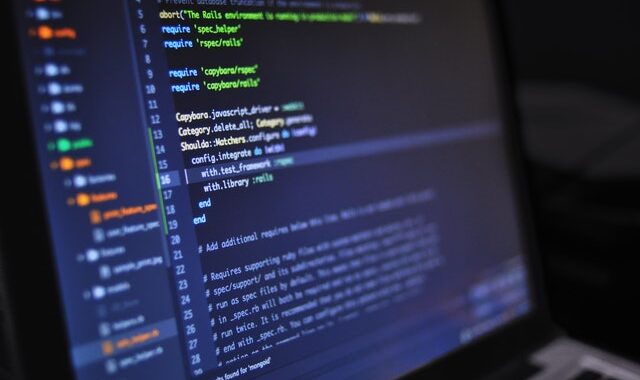
With the dispersion of HR data, due to the use of numerous HR software, the Core HR is emerging as a key tool. While its use was first deployed mainly in the HR departments of multinationals, the Core HR is experiencing a revival in popularity in all types of companies, because HR managers have understood that it is an essential tool to support the digitization of the HR function. So, how does the Core HR enable the creation of a single data structure as well as a harmonization of HR processes?
Related articles:
HR Software: The Ultimate Guide to Optimize Your HR Department
Already Have an HCM Cloud Solution? Here’s What’s Next for Digital HR
The Centralization of Employee Data: an Essential Functionality
Employee data: voluminous and scattered
Each employee generates a lot of HR data, among them, we can find:
- His/her personal information (name, date of birth, postal address, bank details, social security number, etc)
- Type of employment contract, job title, and description, working hours
- Payslips, expense reports, compensation, reimbursement
- Competencies, certifications, manager evaluations, training completed, training in progress, etc…
- Learning curriculum, type of careers, etc.
Nevertheless, legal and employee-related information is often dispersed within various HR tools used by the human resources department: payroll management software, leave & absence, recruiting management, talent management, training management, compensation management, and much more.
Note that: these pieces of information are more scattered in large companies or multinationals with various subsidiaries or high turnover rates. Indeed, the management of human resources in such a context can quickly become complex and time-consuming, especially if the HR department does not benefit from an efficient HR data centralization tool such as the Core HR.
CORE HR: a centralizing tool for employee data
Talent Management, Administrative Management, Compensation Management, Leave & Absence Management, Career Management, Employer brand… the human resources function has a lot to do to take care of its human capital in the company, and it can quickly become overwhelming. Therefore, to simplify processes and save time, nothing is more important than centralizing employee data in a single tool: the Core HR.
The Core HR can collect all data generated by employees, which constitutes a key database for HR. Indeed, by automatically centralizing HR data within a single employee profile, this HR software allows the HR executives to rapidly find the information to sort and select the data they want to appear on a profile. For efficient HR management of employee files, HR needs quick access and a panoramic view of all employee data. Of course, this data collection needs to be reliable and accurate to ensure a smooth HR processes.
As soon as an employee is hired within the company, the Core HR must be activated directly during preboarding. This onboarding stage requires a lot of investment from different departments (human resources services, accounting, managers, and other collaborators linked to the process). Another thing is that before his first day of work, the recruit is responsible for filling out various forms. He also needs to familiarize himself with some rules, transmit his personal information, and create his professional email address, etc.
Thus, thanks to the Core HR, an HR professional can gather all the data related to employees allowing them to obtain immediate access to it. Such a unique, automated, and centralized information system offers the HR function significant time savings and efficiency gain.
Employee Experience, Reporting, Security… The Other Advantages of a Core HR are Numerous
New HR solutions are therefore made possible through digital transformation. They are designed to respond to HR development issues, particularly the employee experience, which is a key factor in these concerns. Indeed, creating an intuitive and easy-to-use platform is valuable. HR performance is now also measured in terms of QWL (quality of work-life) and talent retention. Thus, it is important to build an HR solution that facilitates the user experience. An employee should quickly find the data in which they are interested. Also, the Core HR enables employees to better identify themselves within the company. Thanks to this common interface, employees no longer feel part of just an office, subsidiary, etc…, but part of a single, entire entity. Such a collaborative platform improves interactions between team members. The Core HR allows an employee to perform document requests, contact another employee more easily, manage interviews, appraisals, leave requests, etc. So many possible actions on a single HR portal. Well assisted throughout their actions, an employee will engage professionally and be more productive.
By compiling data in this way, the Core HR plays a relevant role in building reports efficiently. Thanks to standardization, localization, and centralization of data, HR reports and dashboards can be based on more reliable data. Indicators can be local or global, with more precise monitoring than before. This analytical data will then be studied more closely and taken into account when making strategic decisions. The use of HR dashboards takes on a whole new meaning in a Core HR. More dynamic and visual, companies have statistical data from all their HR tools. By grouping different HR indicators (performance index, compensation, absences), an HR professional will manage the employment and competencies of each employee.
Besides, HR services are strengthened since information flows more securely with the Core HR. The risks of loss of information and hacks are significantly reduced. Rather than having multiple information systems scattered across your various HR tools, all data is stored in one place, allowing for better confidentiality management. In addition, the company that has a Core HR has the flexibility to set up access rights, selecting what will be visible or not, by whom, according to positions, organizations, geographical areas, etc. There will be fewer informal exchanges and only one channel for information retrieval. As cybersecurity is becoming more and more important and impactful, it is a must to consider this matter when implementing strategies for performance and HR management.
Moreover, the automation of digital processes allows user data to be updated automatically. For instance, with the preboarding workflow, once the candidate has been recruited, all his/or her information filled out on the application form (personal info: address, marital status, phone number, references) are automatically integrated into the employee file. Then, HR professionals can launch data update workflows to ensure it complies with the standards. Note that the HR manager can be notified of any changes made and be subject to possible approval.
CORE HR and Globalization: a Solution to Harmonize Your HR Processes Across All Countries
For large companies and multinationals located in various countries, data management must also be in accordance with the legal obligations of the country.
Hence, it is necessary to address some issues globally and others more locally. The Core HR enables you to link these different problems. Above all, it makes it possible to standardize the processes of the HR function and the various HR services dispersed around the world. The Core HR simplifies internal communication and can become a truly collaborative platform because the same information can be available to all employees around the world. Furthermore, the Core HR drives a unified HR policy and common concepts (business policies, compensation, payroll, administration policies data model, etc…), making it a very high value-added solution for a more agile and unified human resources management.
HRIS and CORE HR: a Crucial Complementarity
To have a well performing Core HR, it is recommended to be equipped with an HRIS software. A Core HR allows you to create a common platform and a unified information system. Indeed, thanks to its intelligent connectors, all the HR software installed in the company’s ecosystem can be connected. Thus, it allows to intelligently retrieve the data integrated into each of these software and to transfer them into the Core HR. Without the HRIS, scattered data cannot be centralized efficiently, and the Core HR cannot exist properly.
It also works the other way around because the HRIS needs the Core HR. The Core HR simplifies the HRIS by improving the availability of information. By connecting multiple HR software, (Payroll, Leave & Absence, Talent management) the HR department will no longer need to log in separately to each of its tools but rather, they will have single access from a single platform. In other words, with a Core HR, the HR department that gathers multiple data points about an employee will be able to search and query the Core HR to get information from various HR tools.
Digital transformation and the standardization of administrative processes are among the challenges that HR function is facing. Therefore, the Core HR is the key to the progress of HR services. The adoption of a unified Core HR will allow companies to achieve high competency in their HR department. By compiling all the data inserted in the various HR tools used by the company, it builds a real-time database, accessible, editable in a few clicks, and automatically updated. Such a management solution facilitates personnel administration and optimizes HR processes. More broadly, the Core HR supports progress towards a more unified HR information system.




